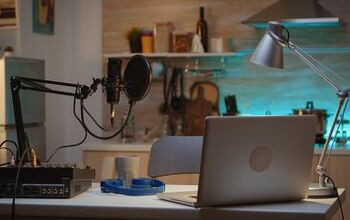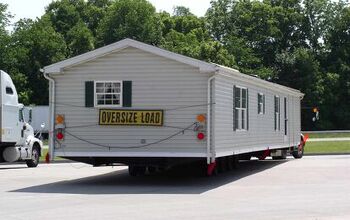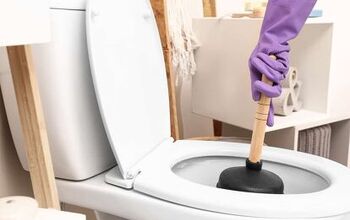How To Set Up A Rehearsal Room At Home

For years, countless musicians overpaid to practice with their friends at overpriced rehearsal studios. Today, it’s easier than ever for musicians to create a safe space to practice at home. That said, many people don’t know where to start with how to set up a rehearsal room at home.
Carefully soundproof your rehearsal room at home with acoustic panels and sound blankets to reduce echoes and avoid noise complaints. Put the drums in the center of the room and place the bass amp to the left, and the guitar amp to the right. Set up monitors on the ground at least 3 feet in front of the guitar and bass player.
That ensures the guitarists can hear themselves and each other over the drums. You don’t need to spend a fortune to set up a rehearsal room at home if you simply focus on the layout over everything else. Follow along as we explore how to set up a rehearsal room at home.
How To Set Up A Band Practice Room
1. Soundproof The Space
The last thing you want to do is to disturb your housemates and neighbors with an overly loud rehearsal room. You can avoid this altogether if you simply soundproof the room. Not only does this stop sound from spilling out of your band practice room, but it will also make the music sound better in the room.
Acoustic panels and sound blankets can help you avoid thin, echoey amplifier tones that can ruin any practice. You can hire a professional to soundproof the room, or you can save hundreds of dollars and do it yourself. For example, you can line the walls with acoustic panels and sound blankets to absorb a lot of noise.
Otherwise, you can strategically place dividers and furniture in the room to soak up sound. Sound is more likely to spill out of a rehearsal room if the space is empty. Keep that in mind when you settle on an instrument layout and leave room for objects you have, like chairs, and bookshelves. You can even put weatherstripping under the door to absorb some of the sound.
2. Carefully Position The Instruments
There is no ironclad rule when it comes to instrument layout in a band practice room. It helps to use the drum set as a centerpiece, so you can position the amplifiers around it. This also helps with noise control and prevents sound reflections that feed into microphones.
Next, you can set up the bass and guitar amplifiers and speaker cabinets on either side of the drums. Place the amps slightly in front of the drums to the left and right to leave space for everybody. Many bands put the bass amp to the left of the drummer, and the guitar amp to the right.
Leave room a few feet in front of the amps for a microphone stand as well. It’s also important to leave some extra space if you want to set up extra microphones for the guitar and bass player to do backup vocals.
3. Set Up Monitors
Granted, this is optional, but you can greatly improve your rehearsal room if you add monitors. Monitors let you hear the instruments much better than if you play without them. Otherwise, it’s hard to make out the nuances of the bass, guitar, and vocals.
That’s especially true if the drummer loves to hit their snare and toms as hard as possible. Monitors cost as little as $100, and it’s easier than ever to find cheap, used monitors. Position the monitors 3-8 feet in front of the band facing the amps and drums for the best results.
4. Don’t Skimp On Microphones
Microphones are essential for any at-home rehearsal space, but that doesn’t mean you must spend a fortune. Instead, you should find a microphone and PA set that you can reliably use for years. This will let the singer and a backup vocalist or two sing while playing.
Otherwise, you can buy a few microphones and a PA system separately, but that’s typically more expensive. It always helps to keep a few extra microphones around in case one breaks. Many seasoned DIY musicians also keep extra XLR cables at home for practice and recording purposes.
5. Set Volume Guidelines
We all know how tempting it is to turn up your amp. After all, we all want to be heard, but that doesn’t always work out in a rehearsal room. No matter what, it’s hard to hear bass and guitar frequencies over the sound of drums.
However, this becomes much harder when the guitar player and bass player constantly increase their volumes. The best way to get around this is to soundcheck and figure out the ideal volume for each amplifier to cut through the mix. It also helps to invest in a sound mixer and PA system so everybody can hear themselves.
As previously mentioned, monitors also help with this quite a bit. Many musicians get by at practice with ¼ of the volume they would set for a live show. Not only does this provide clarity, but it also comes in handy if you have nearby neighbors and housemates you don’t want to get upset.
6. Keep The Room Stocked
Any seasoned, homegrown musician can tell you that equipment and supplies break or disappear when you need them most. That’s why it’s always a great idea to keep extra supplies in your band practice room for emergencies.
Whether it be XLR cables, instrument cables, guitar pedals, or drumsticks, you can’t go wrong with keeping backups around. It also helps to keep extra guitar picks and earplugs around, as you never know when someone will forget theirs at home. Gaffer tape is also essential in any rehearsal room at home.
Use gaffer tape to secure cables and reduce tripping hazards. Gaffer tape also helps to secure acoustic panels and sound blankets.
7. Tell Your Neighbors
A good relationship with your neighbors is just as important as a great rehearsal room at home. Band practice can be loud, especially when the bass player, guitarist, and drummer are all locked into a groove. Add vocals to that mix, and it’s a recipe for a noise complaint from one of your neighbors.
You can avoid that problem altogether if you speak to your nearby neighbors. Politely let them know that you and some friends plan to play music in your new rehearsal room. Tell them about the typical timeframe so they know when to expect it.
This leaves no room for surprises, and it reduces the chance of souring your relationships with them. You may need to adjust the volume or beef up your soundproofing if it causes problems. Keep in mind that you can’t necessarily get away with this if you’re a renter and share walls with your neighbors. This is best done in stand-alone houses.
Summing It Up
First, you must soundproof your rehearsal space at home to reduce echoes and stop noise from seeping out. After that, you can place the drums in the center of the room with guitar and bass amps on either side. Invest in a few XLR microphones, a mixer, and monitors, so everyone in the band can hear themselves. Keep a few extra cables, guitar picks, microphones, and earplugs in your rehearsal room just in case something breaks.
Related Guides:

Nick Durante is a professional writer with a primary focus on home improvement. When he is not writing about home improvement or taking on projects around the house, he likes to read and create art. He is always looking towards the newest trends in home improvement.
More by Nick Durante





















![Cost To Drill A Well [Pricing Per Foot & Cost By State]](https://cdn-fastly.upgradedhome.com/media/2023/07/31/9074980/cost-to-drill-a-well-pricing-per-foot-cost-by-state.jpg?size=350x220)





![Standard Dining Room Table Dimensions [for 4, 6, 8, 10 and 12 People]](https://cdn-fastly.upgradedhome.com/media/2023/07/31/9074335/standard-dining-room-table-dimensions-for-4-6-8-10-and-12-people.jpg?size=350x220)